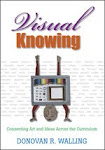My interest in Conrad Veidt was tipped by a Halloween-season
showing of the 1924 silent thriller, The
Hands of Orlach, for which Dennis James provided live organ accompaniment
at the Indiana University Auditorium. Veidt’s career spanned a quarter century,
beginning in 1917 with the silent movies and into the talkies, ending at his
death in 1943 at age 50.
Hans Walter Konrad Weidt was born in Berlin, Germany, on 22
January 1893. He was drafted into the German Army during World War I and saw
action in the Battle of Warsaw but contracted a serious illness that
subsequently earned him a discharge in 1917. That year he returned to Berlin to
pursue an acting career. He would eventually appear in more than a hundred
films.
One of his earliest, most memorable performances was in the
classic German Expressionist film, The
Cabinet of Dr. Caligari, in 1920.
Veidt played the sleepwalker Cesare to Werner Krauss’ Dr. Caligari. By the end
of the decade, he was making movies in Hollywood as well.
Veidt was vigorously opposed to the Nazi regime. When
Hitler’s Minister of Propaganda Joseph Goebbels began a purge to rid the German
film industry of Jews and liberals in 1933, Veidt and his third wife, Ilona, a
Hungarian Jew, emigrated to England. Throughout the World War II era, he
donated large amounts of his personal fortune to the British war effort.
He became a British citizen in 1938, although he and Ilona
moved to Hollywood in the early 1940s. Ironically, his best-known Hollywood
role was as a Nazi officer, Major Heinrich Strasser, in the 1942 Humphrey
Bogart-Ingrid Bergman film, Casablanca.
Veidt suffered a massive heart attack while playing golf in
Los Angeles and died on 3 April 1943.
Handsome, gaunt, and exuding an aura of anxiety, sometimes
ecstatic and sometimes maniacal, Veidt was at his best in the German
Expressionist films of the late Teens to early Thirties. In The Hands of Orlach, in which he plays a
pianist whose injured hands are replaced with those of an executed murder,
according to critic Lotte Eisner, Veidt “dances a kind of Expressionist ballet,
bending and twisting extravagantly, simultaneously drawn and repelled by the
murderous dagger held by hands which do not seem to belong to him.”
It was a pleasure to rediscover not only the tantalizing
stylizations of the German Expressionist silent films but also to witness one
of the masters of that art at work.






